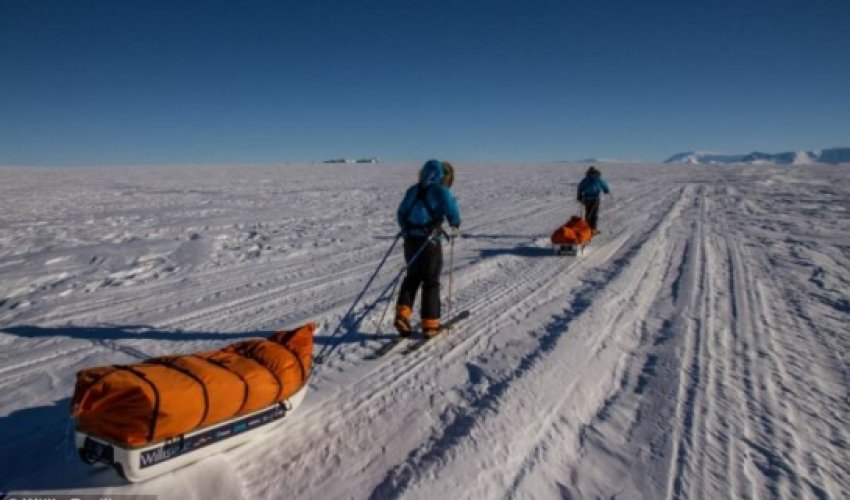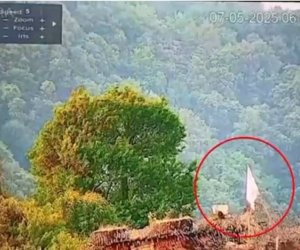The teenager taking on Antarctica - VIDEO

For a lot of teenagers, deciding what to wear to Christmas parties is enough of a festive challenge, but one 19-year-old explorer is currently battling howling gales and intense snow storms in the Antarctic in a bid to set a new world record.Parker Liautaud is currently nearing the final stages of an audacious expedition to trek 640km from the coast of Antarctica to the South Pole and collect scientific research that will inform the study of climate change.But it hasn’t been easy - bad weather delayed the start of the trek to December 6 and now the Yale student is suffering from back ache, cramps and painful rashes thanks to a wind chill factor of -50°C.On day seven of the expedition, Mr Liautaud wrote that chilling winds measuring up to 46mph (74km/h) had been blowing in his face.‘We had a whiteout for most of the day and near the end of the day it wasn’t really possible to see anything. I could hardly see the skis on my feet and lost Doug [his expedition partner] a couple of times.’'It's more frustrating than frightening - it makes navigation difficult ... I really hope the whiteout goes away - it's really not my thing.'He described the weather conditions as ‘very difficult’ and said: ‘Some of the issues I’ve been dealing with – pain in my ankle caused by the way I’ve been walking…as well as the rash and back pain and all the minor things come with a vengeance.’While it is easy to imagine Antarctica as a huge white expanse, Mr Liautaud said that he has been suffering with altitude sickness and is short of breath as he is walking around 2,622m above sea level.Together with his team, he flew to Union Glacier before travelling 1,900 miles to Leverett Glacier in a custom-built ‘Ice Broker’ 6x6 Toyota Hilux truck kitted out with scientific and communications equipment and laden with life-preserving supplies.However, from there, he and his teammate Doug Stoup, swapped to skis in attempt to set a new ‘coast to pole’ speed record without help from any external sources.They are on course to cover the 387 miles (640km) which will make Mr Liautaud the youngest man to ski from the coast to the South Pole (along a new route) as well as the youngest person to reach both the North and South Poles by foot – as Mr Liautaud ventured north when he was just 15 years old.It is easy to forget, given the incredible journey Mr Liautaud has embarked upon, that he is a normal teenager who enjoys hanging out with his friends in his dorm room and reads notes from his parents to lift his spirits on the long trek. A song called ‘Ten thousand hours’ by Macklemore and Ryan Lewis is currently one of his favourite tunes and reminds him of what he has accomplished in months of training.He spends a lot of time thinking about food because he only has limited supplies of freeze dried food and nuts.'But it's mainly because I spend a lot of the day being hungry. It's been a month since I've had normal food...and I'm losing a lot of weight,' he added.Mr Liautaud and Stoup are each pulling an 82kg sled, or pulk, consisting of equipment and supplies, while the truck following them films their endeavour – skiing for 12 hours, 18 miles (30km) a day and setting up camp for four – as well as transmitting their biometric data to viewers on willisresilience.com across the world.He said the freshly blown snow makes it especially difficult to pull sleds through, much like dragging feet through sand.Mr Liautaud said: ‘Every step is another one in the bag and the most important thing is to stay positive.’The pair have tackled the 'remarkable' Trans-Antarctic Mountains, which at their highest point tower 14,855ft (4,528m) and eat a staggering 6,000 calories of food to keep their energy up, every day.Mr Liautaud trained hard in between studying and attending lectures, fitting in gym work-outs, long runs and tyre pulling sessions to prepare himself for the trek and as well as building his strength and stamina, he worked on his flexibility as sprains or tears could end his record bid.‘It’s dominated my life from physical and mental training to the science and skiing,’ he told MailOnline.He has trained for at least 12 hours a week for months on end in order to ‘deal with the discomfort so it doesn’t block me from reaching my goal.’Despite his intensive preparations, truck crew member Nathan Hambrook-Skinner, said that just before the half way point of the expedition, Mr Liautaud was ‘battling nagging back pain and a raw sweat rash.‘I can’t come close to expressing the kind of physical pain that Parker must be experiencing after 12 plus hours of skiing across rock solid snow and ice, tugging an immense pulk,’ he said.Mr Liautaud has talked about being ‘consistently frozen to the bone’ and 'losing every ounce of energy and becoming kind of useless towards the end of the day.’He told MailOnline that it is hard to describe just how cold temperatures of -50°C feel like but the most noticeable thing is how fast things freeze. The inside of a face mask takes a few seconds to freeze and is ‘extremely uncomfortable,’ Mr Liautaud explained, while your eyes can become glued shut and boiling water takes just a couple of minutes to freeze in temperatures of -20°C.‘Everything is really hard but there’s no point in focusing on the negatives. We are in an incredible place and are lucky to be here,’ he said.Speaking before he set off on the adventure, Mr Liautaud said he was not scared of being alone, but had lots of irrational and ‘reasonable’ fears such as falling into a crevasse.‘It’s good to be nervous as it makes you take care,’ he said.While Mr Liautaud may well break records on his epic trip, he embarked upon the challenging journey to raise awareness of global warming.‘My goal has never been just to test my limits. I’m not a natural athlete and it’s been a learning process to become an explorer,’ he said.Along the testing route in one of the most hostile environments on Earth, Mr Liautaud has deployed a new lightweight weather station that measures and transmits climate data to scientists and has collected snow samples.While this might sound like a simple enough task, each sample must come from deep snow pits and the process, which takes around two to three hours, requires a lot of patience in the extreme cold.The expedition has three scientific research programmes, one of which is to study the deposition rate of Tritium, a radioactive isotope of Hydrogen, across Antarctica.The data collected will be used to better understand the global water cycle, which is important to unravelling the mysteries of climate change.Mr Liautaud and Mr Stoup’s data will show the variability of isotope composition in precipitation across Antarctica and the pair’s samples come from ice that has not yet been researched.The ‘Coldfacts 3000BX’ mobile weather station they have deployed will collect data that can be compared to established stations nearby.(dailymail.co.uk)ANN.Az
Similar news
Similar news
Latest news 
More news 



































 Photo
Photo 



 Video
Video 

